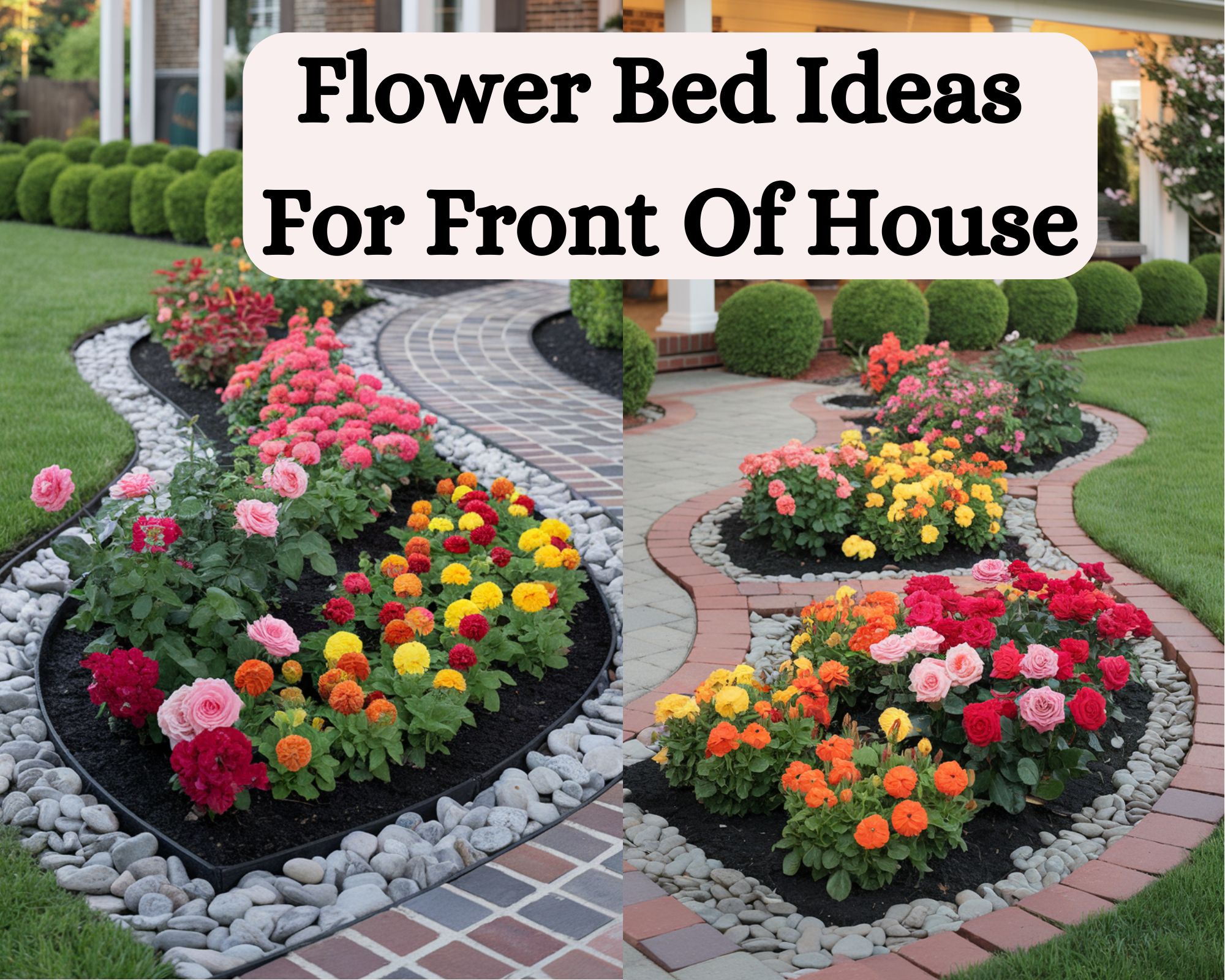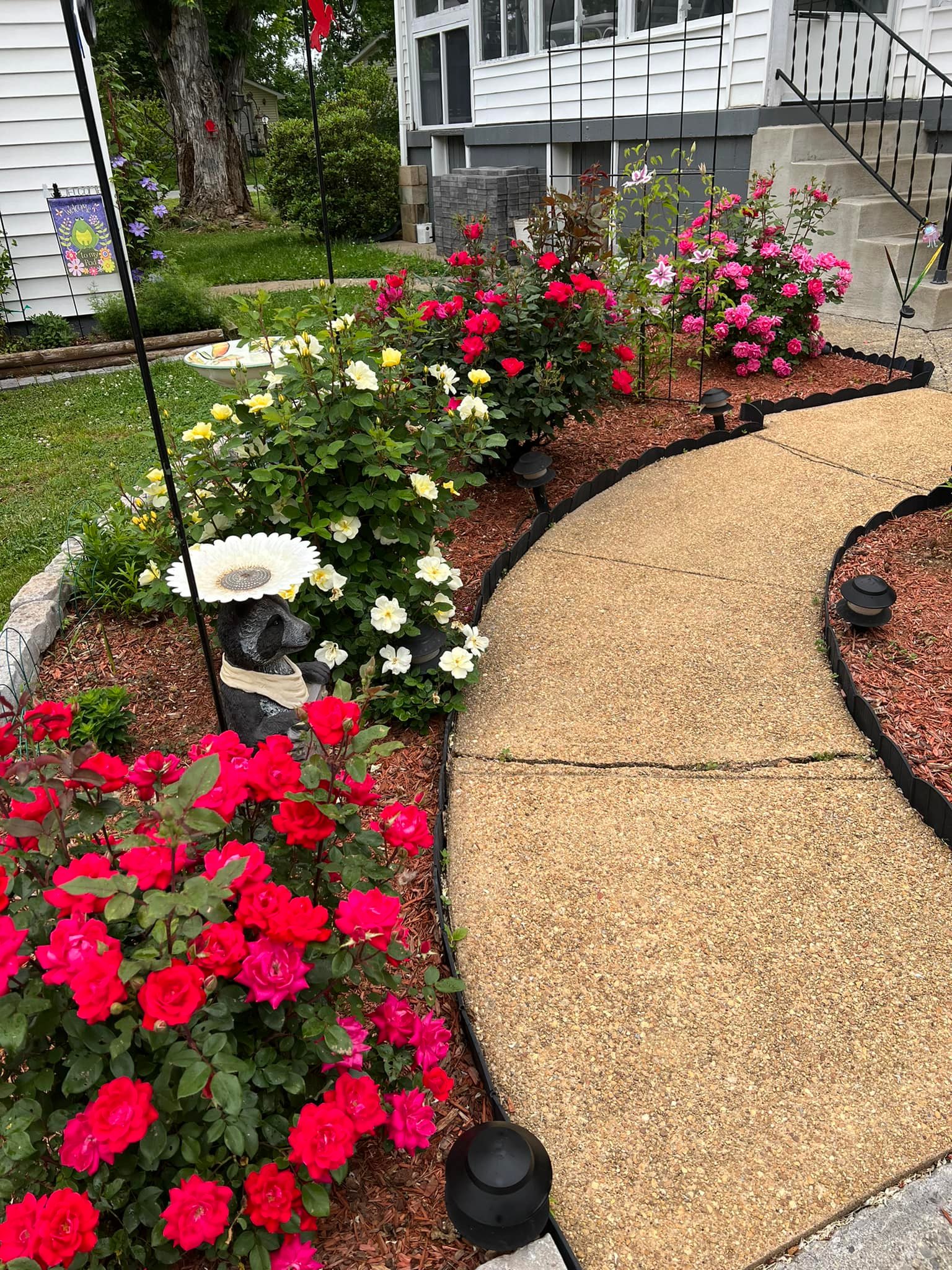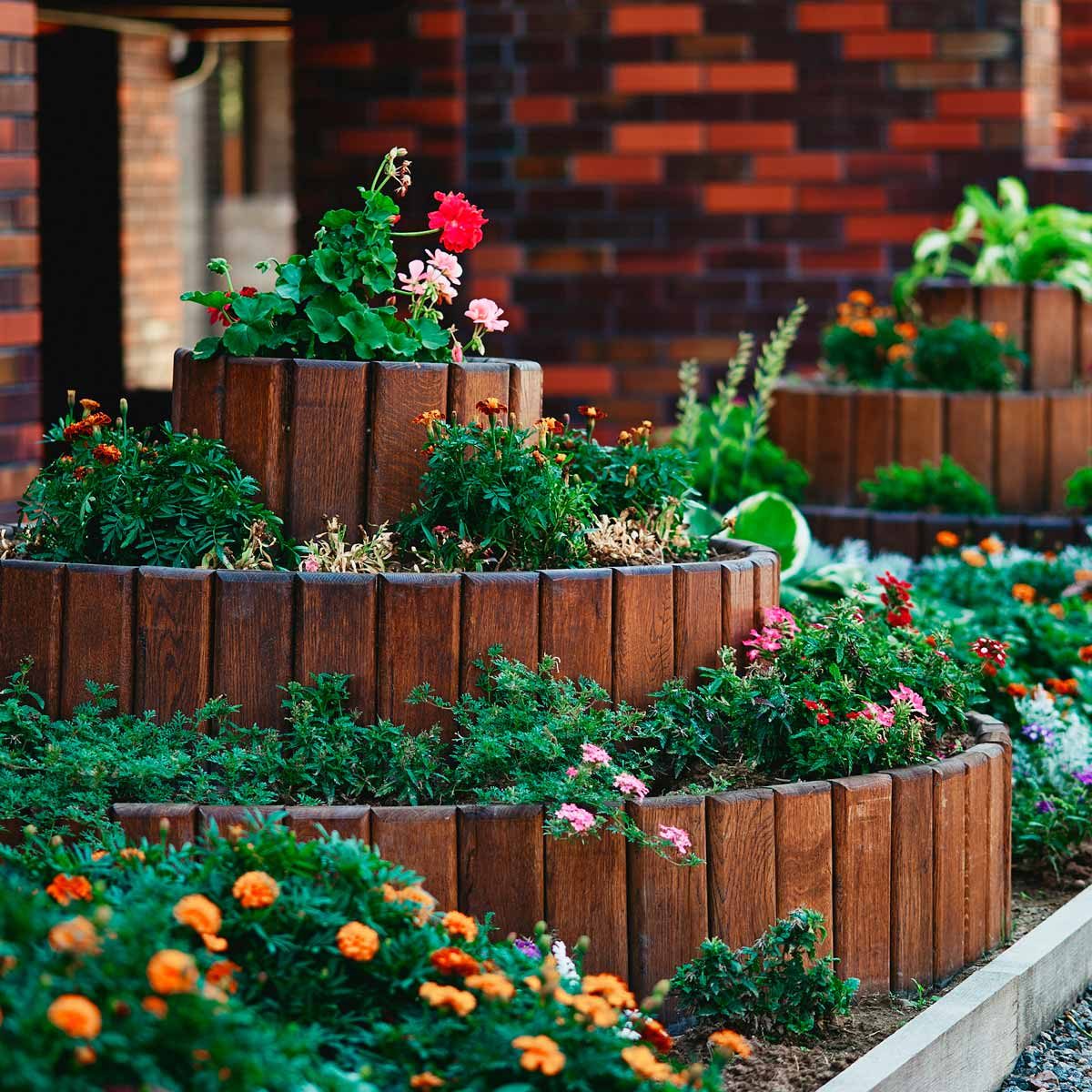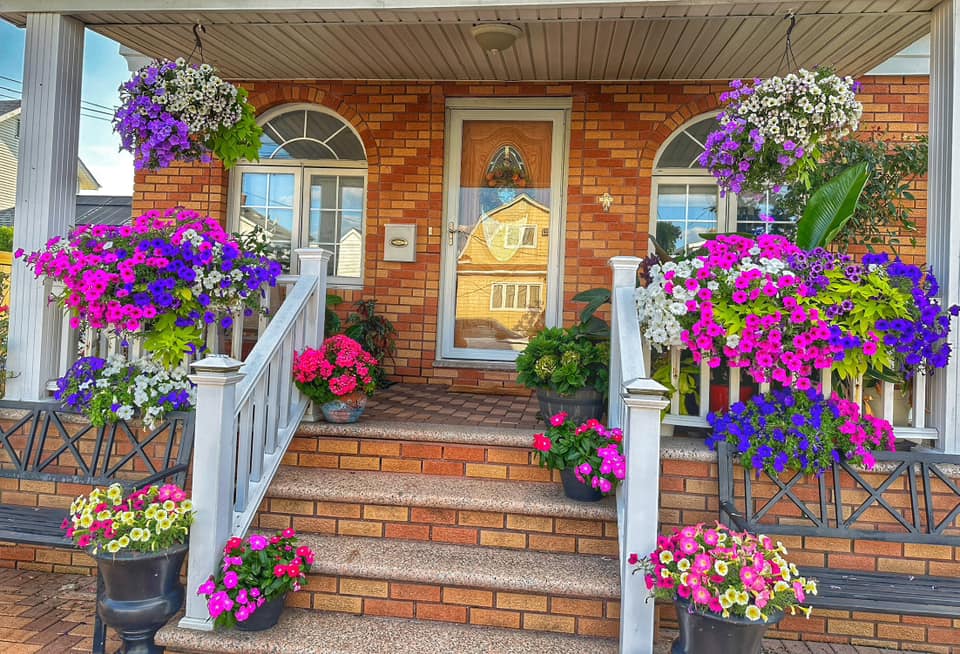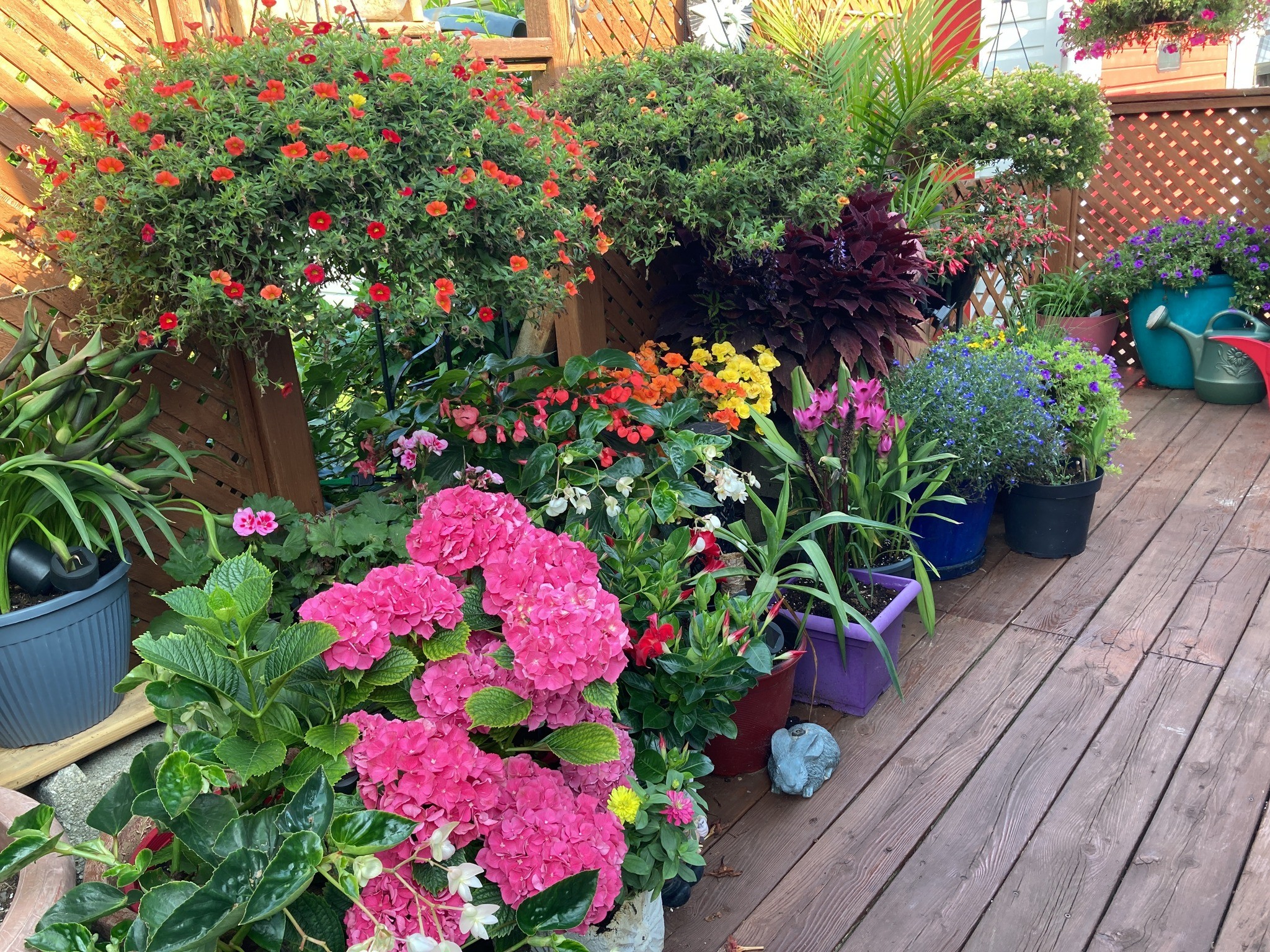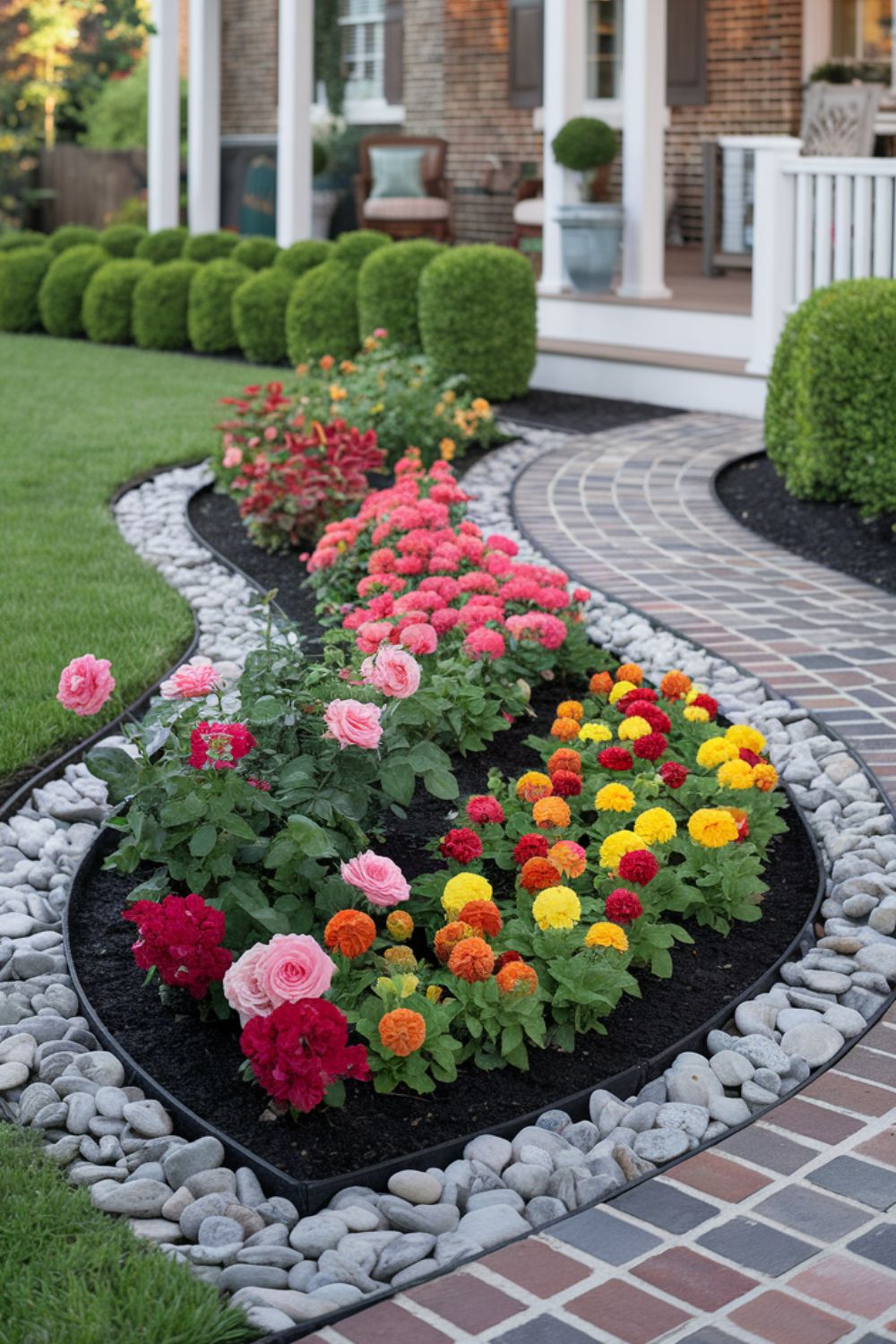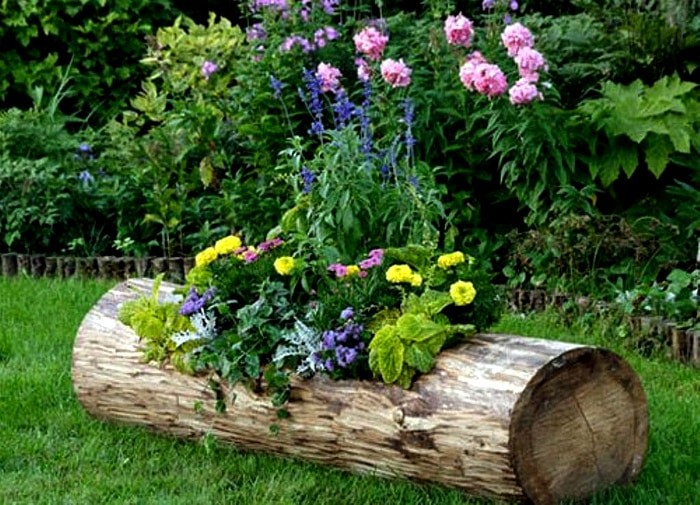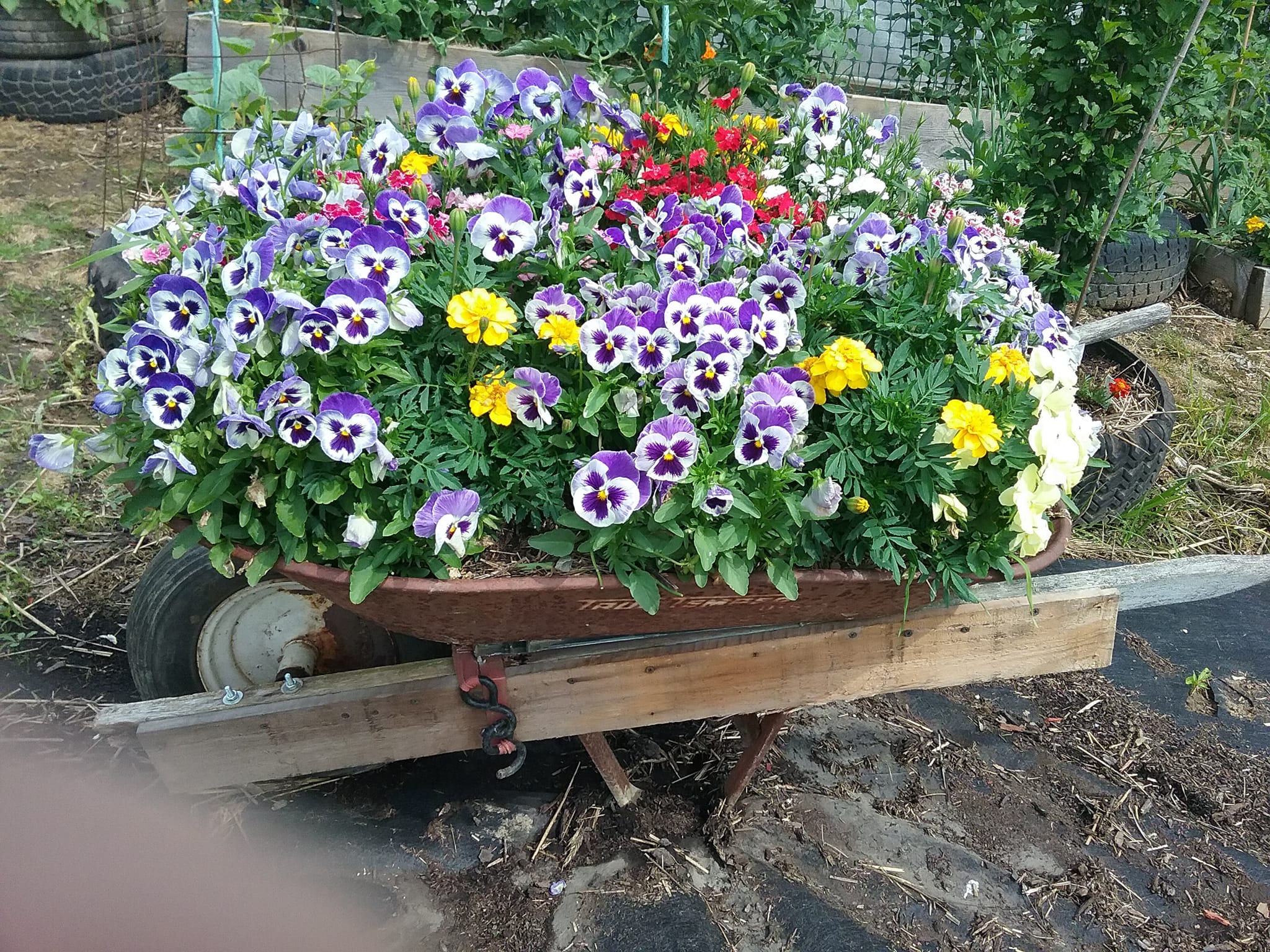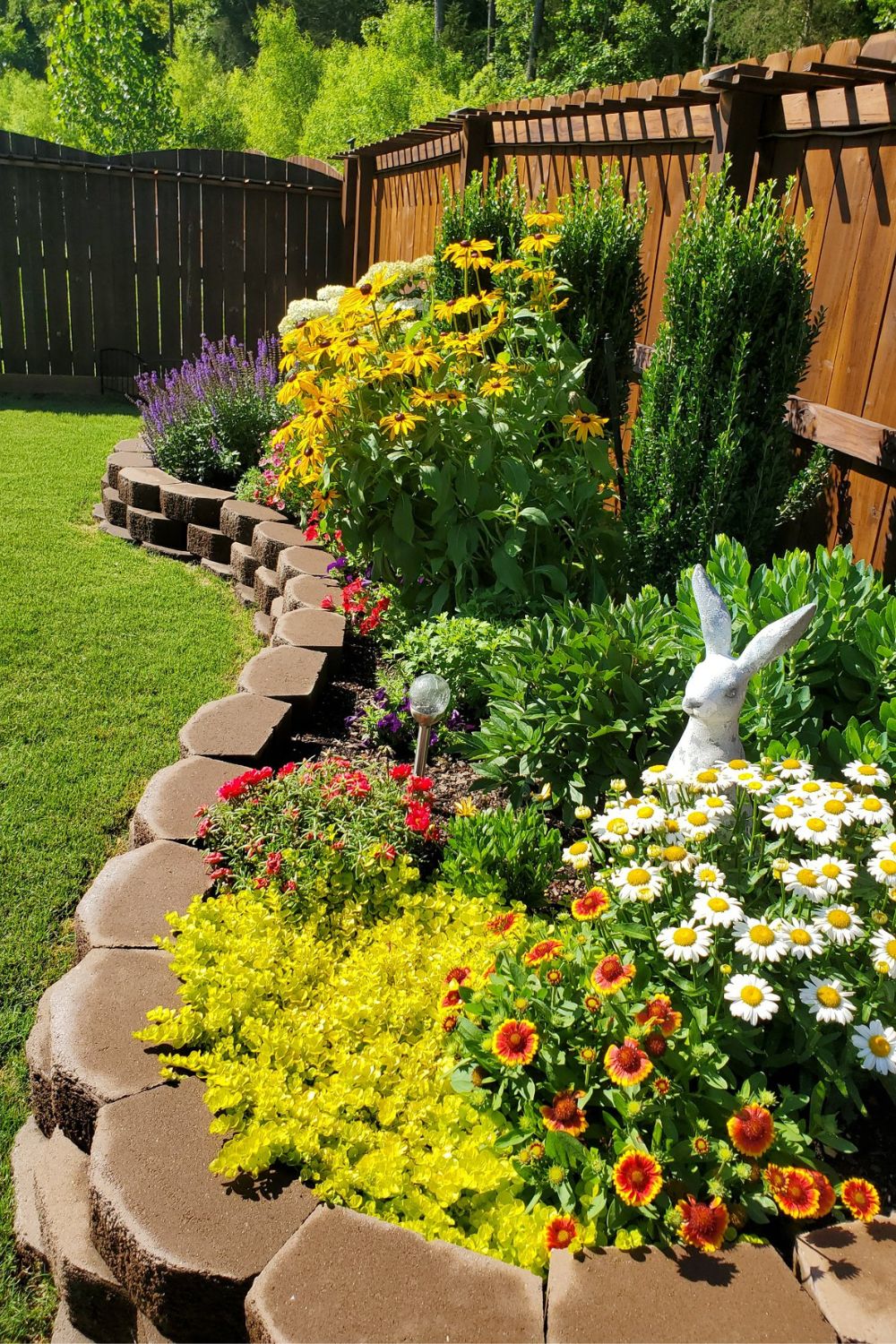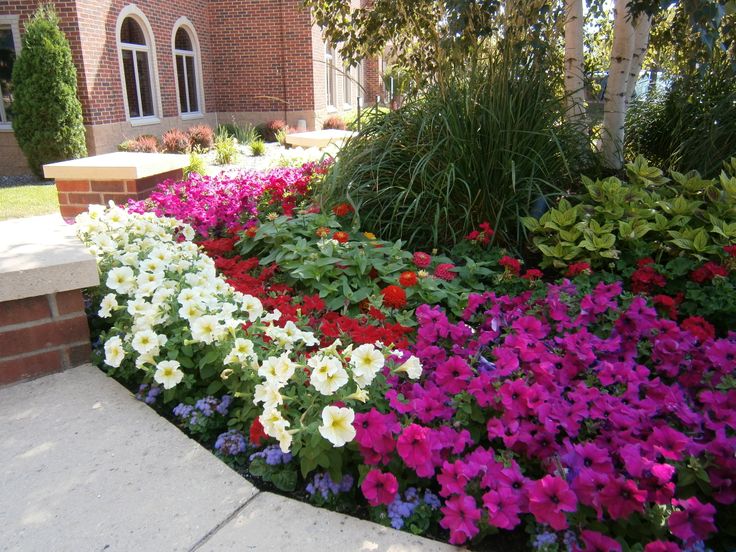A well-manicured front yard is pretty cool, but if you want to make your home stand out more, a flower bed will do it. So, create a welcoming and visually blooming beauty right at your doorstep with a simple flower bed.
People will first notice your home’s front area when approaching or passing by. Therefore, transforming it into a vibrant, inviting space defines the tone of the whole property.
With the right flowers and appealing layout, you will create a simple flower bed you will love. Below are some fantastic ideas to ignite your creativity.
15 Simple Flower Bed Ideas For Front Of House
1. A Walkway Flower Bed
Let’s kick off our list by beautifying your walkway. The idea is to make the flower bed complement the walkway rather than obstruct it. Incorporate flowering plants with attractive foliage or vibrant flowers strategically to draw attention.
You could also include fragrant plants such as lavender, roses, or jasmine for their delightful scents. Hardscape elements such as decorative stones, edging, or pavers define the flower bed’s boundary, provide structural support, and add visual interest, so consider adding them.
Read More:
- Plants That Make Your Yard Smell Good
- How To Keep Weeds Out Of Flower Beds Naturally
- Best Shrubs For Front of House to Boost Your Curb Appeal
2. A Colorful Flower Wall
If you have limited space at the front of your house but still desire a flower bed without crowding the place, why not create a flower wall? It is a creative, space-saving solution that helps add greenery and color to outdoor spaces.
The flowers can hang at the front fence, an exterior wall, the front door, underneath windows, the patio, or around outdoor structures such as pergolas, trellises, or arbors. Suitable flowering plants for a flower wall include climbing roses, trailing fuschia, wisteria, clematis, lobelia, nasturtium, and bougainvillea.
3. A Circular Flower Bed + Centerpiece
Break the monotony of your rectangular or square front lawn with a circular flower bed. Use a tall, captivating flowering tree, ornamental grass, fountain, or sculpture as the centerpiece. Arrange the flower plants symmetrically around the centerpiece with evenly spaced intervals between each plant for a formal and balanced look.
Alternatively, arrange them in a less structured manner, with varying distances and groupings, for a more natural and organic feel. Use medium-height plants or flowering perennials as filler plants, and then edge the border with low-growing plants or flowers, metal, rocks, pavers, timber, or plastic.
4. A Raised Flower Bed With A Seating Area
Create a cozy spot to relax and enjoy the outdoors with a raised flower bed that has a seating area. Construct the flower bed frame using durable materials such as wood, brick, or stone, and then fill it with various flowers, shrubs, and foliage plants.
Ensure your flower bed is at a comfortable sitting height and has ample room for planting flowers. Integrate built-in benches or freestanding seating such as chairs or a bench into your raised flower bed.
5. A Tiered Flower Bed
This simple, brilliant idea lets you showcase various flowers while maximizing space and creating a dynamic focal point. You can build tiered flower beds in different shapes, sizes, materials, and heights. Plant flowers, shrubs, grasses, and groundcovers in your tiers to create a diverse and visually appealing display.
Place taller plants at the back of the tiers and shorter plants at the front to create depth and dimension. Also, personalize your tiered flower bed with decorative features.
6. A Tree Base Flower Bed
Does the area around the base of the trees at the front of your house look bare? Enhance the trees’ beauty and the surrounding areas with flower beds. Choose flowers that thrive in the shade. A mixture of perennials, annuals, and groundcovers will provide vibrant hues and interest year-round.
Read More: Best Plants To Grow Under Trees For Landscaping
Plan the flower bed layout based on the tree canopy’s shape and the available space. Radial patterns maximize planting space while allowing room for the tree’s roots. Also, make sure you don’t disturb the tree’s roots when digging and planting.
7. A Vibrant Hanging Flower Bed
Planting flowers in hanging baskets or planters offers a straightforward way of beautifying your front porch, windows, entryway, pergola, trellises, tree branches, and fences. Create a lush and full-looking display with trailing flowers like petunias, bacopa, lobelia, or verbena.
In addition, add texture and interest with foliage plants such as ivy, ferns, or spider plants. Consider including herbs like thyme, rosemary, basil, oregano, cilantro, chives, and mint if space allows. Vary the hanging heights and angles to maximize space and make the arrangement more visually appealing.
8. A Potted Flower Bed
Pots and containers are excellent for displaying flowers if you have limited space. It allows you to easily move and rearrange plants, experiment with different combinations, and accommodate changing seasons and preferences. Your flowers will thrive together if they require the same water and lighting needs.
When arranging your flower plants, consider their mature sizes and growth habits. Position your potted flowers along pathways, near seating areas, the patio, or the front door. Potted flowers can serve as focal points or complement the existing landscaping features.
9. A River Rock Flower Bed
This flower bed has a natural, rustic charm, requires minimal maintenance, is long-lasting, and visually dynamic. The soft, delicate flowers against the rugged texture of river rocks create an interesting visual contrast. Customize your flower bed by choosing the color, texture, and sizes of the river rocks you desire.
Create this flower bed by laying a landscape fabric over the soil and evenly spreading river rocks over the fabric. After that, dig holes in the landscape fabric and soil beneath it, and plant your flower plants.
10. Play With Colors
Flowers come in many colors and shades, which gives you plenty of room to play with colors when designing your flower bed. For example, create a monochromatic palette by planting flowers of varying shades of a single color for a cohesive and harmonious look.
Alternatively, if you want to create a dynamic and visually appealing contrast, pair colors that complement each other. For example, purple and yellow flowers form a vibrant and cheerful display, while orange and blue flowers make a bold and eye-catching combination.
11. A Log Flower Bed
Convert the tree logs in your front yard that you have no use for to make unique, bold flower beds. Use sturdy, sizeable logs that are free of rot, pests, and disease. Cut the logs if they are too long, then hollow them out to create space to plant your flowers.
After that, sandpaper the log to smooth the interior and exterior surfaces and apply wood sealant to prolong its life. The next step is to fill the hollowed-out section of the log with potting soil and then plant the flowers.
12. A Wheelbarrow Flower Bed
Do you have an old wheelbarrow lying around gathering dust? Rather than discarding it, consider making it a flower bed for a vintage, rustic, and delightful look. Ensure the wheelbarrow is sturdy and has a flat base to hold the soil and plants securely.
Before filling the wheelbarrow with potting mix, clean it, seal any holes or cracks, and drill drainage holes at the bottom of the wheelbarrow. Pick a suitable location for your wheelbarrow flower bed to be seen and admired. You can also move it around.
13. Repurpose Old Tires Flower Bed
There are multiple ways of turning old tires from cars, trucks, or bicycles into durable, functional, eco-friendly, fun containers for planting flowers. You can hang the tires, layer them, or even arrange them next to each other.
Use the tires as they are, paint them with weather-resistant spray paint, or decorate them with stencils, decals, or other creative designs to add color. Cutting them into desired shapes is also possible. If you hang the tire, use a rope or chain and secure it on a sturdy structure like a tree.
14. Create A Wavy Flower Bed
Break away from geometric shapes and straight lines with a wavy flower bed. This design mimics nature’s waves, like the meandering rivers, and adds a sense of fluidity and movement to the area. This flower bed suits a more relaxed, informal landscape and works for both small and large front yards.
A wavy flower bed is visually appealing but requires more maintenance than a straight-edged one. Therefore, ensure you can invest your time and effort into keeping it in pristine condition beforehand.
15. Seasonal Rotation
Select flower plants that bloom in different seasons to ensure your flower bed remains vibrant and attractive no matter the time of year. Choose plants that offer vibrant colors, intriguing foliage, and varying heights.
- Spring– start with early-blooming bulbs such as tulips and daffodils and cool-season annuals like pansies and violas.
- Summer– replace spring annuals with heat-tolerant annuals such as marigolds and flowering perennial favorites like daylilies and coneflowers for long-lasting color.
- Fall– transition to fall-flowering plants like asters, sedums, and autumn joy. Consider incorporating foliage plants with vibrant fall colors, such as Japanese maples and ornamental kale.
- Winter– plant winter-flowering plants like hellebores and witch hazel.
Conclusion
A stunning flower bed at the front of your house is a few steps away. Carefully select the right location and flowers, and pick a layout to elevate your home’s visual appeal effortlessly. It could be using wavy, circular, or geometrical shapes, repurposing old items, or incorporating existing features. Enjoy your flower bed as it grows, flourishes, and goes through various seasons.

Hey there, I’m Derek Schew, a writer for Lawnholic.com, where we cover everything and anything related to lawns. As someone who’s spent countless hours tending to my own lawn, I’m passionate about sharing my knowledge and helping others achieve the perfect yard. From lawn care tips to product reviews, I’m committed to providing our readers with the most accurate and up-to-date information available. So whether you’re a seasoned lawn enthusiast or just getting started, I invite you to join our community and discover the joys of a lush, green lawn.

